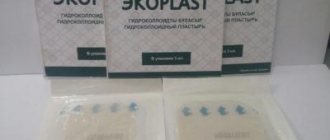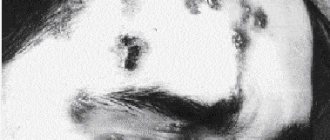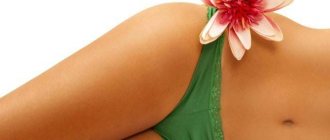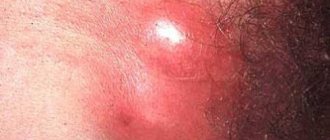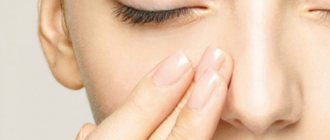Causes
Calluses with black spots appear under the influence of various factors:
- Constant mechanical impact in the form of friction, pressure due to uncomfortable shoes. This could be a small shoe size, insufficient fullness of the shoe, a wrinkled insole, disproportionate socks - anything that rubs and puts pressure on the sole and toes will lead to the appearance of calluses on the foot.
- Traumatic damage from a grain of sand or a splinter. A foreign object goes deep under the skin, growing into the stratum corneum of the dermis. A growth gradually forms, forming a lump and causing pain.
- Prolonged walking barefoot. For example, children may develop calluses during the summer holidays.
- Walking in shoes made of low-quality materials that do not allow air to pass through. Constant sweating of the feet leads to loosening of the outer layer of the dermis and then, when it dries, to its keratinization. The feet do not breathe, they constantly slide, the skin shifts, the friction force increases - all this leads to the formation of growths.
- High heels and flat soles also cause the formation of corns and blackhead calluses.
- On the palms of the hands, formations appear as a result of constant work with tools that cause friction of the skin. If such ordinary calluses are not treated, they dry out, become rough and are exposed to a fungal infection, which spreads and grows like a black rod into the depths of the dermis.
- A callus with a blackhead also appears due to a viral or fungal infection. The growths are dangerous due to very deep germination of the rod.
In especially advanced cases, rod formations can only be removed surgically. Locations of formations:
- on the convex part of the sole;
- between the toes;
- rarely in the center of the heel;
- sometimes on the fingers, on the palms.
How is dry callus diagnosed?
If you suspect the presence of a dry callus, you must make an appointment with a podiatrist. An experienced specialist will be able to make a correct diagnosis during a visual examination, on which the effectiveness of treatment will depend.
The following symptoms are typical for callus:
- Sensation of a dense knot extending into the deep layers of the dermis
- Yellowing of the callus
- The appearance of acute pain upon contact with a callus
- Small hole in the center of the formation
How to treat ingrown calluses?
The main thing you should know is no self-medication! Such formations are strictly not allowed to be cauterized, cut out, steamed, or treated with caustic compounds or “magic” ointments. All methods not recommended by the doctor often lead to skin damage, which will lead to the dynamic growth of deep calluses. First a dermatologist, then treatment. Only a doctor can determine the dynamics of the course and development of the pathology, the depth of germination of the rod. Depending on these factors, treatment will be determined and medicinal, surgical or traditional methods of treatment will be prescribed.
Instructions for use of Feresol solution and substitute analogues
Important! A viral fungal infection, which is typical in the presence of a black callus with a dot, can quickly spread to healthy areas of the skin if self-medicated. Curing the disease will become much more difficult.
Hand calluses
31.05.2021
Calluses on the palms of the hands and fingers are quite common. Most often they appear on the inside, but due to certain reasons or stress they can also form on the back of the hand (for example, in boxers, karatekas).
Types of calluses
Depending on the degree and duration of physical impact, calluses come in several types:
- dropsy, or wet calluses . Appear as a result of intense friction or mechanical impact (especially on skin that is not accustomed to physical activity). In places of damage, blisters appear filled with a clear yellowish liquid;
- dry calluses occur as a result of prolonged but not severe exposure. Dry calluses form gradually, the skin on them is very rough and dry, getting rid of them is much more difficult than dropsy;
- Calluses on the hands often hurt because they have a root that goes into the deep layers of the skin . Such calluses must be removed from the roots, otherwise they will appear again.
Why can calluses appear?
As a result of strong physical impacts, the skin on the palms and fingers is injured. The body exhibits a protective function, intensively restores a thicker and rougher layer of skin in the damaged area. This is why calluses in the affected areas. The reasons for the appearance can be very different, but mainly the following can be distinguished:
- mechanical impact. calluses most often appear in athletes, agricultural workers, gardeners, and heavy physical labor workers;
- loads associated with certain professional characteristics. calluses appear on the fingers due to the friction of instruments, pens, brushes on the surface of the skin (pianists, painters, carpenters, joiners, students, secretaries-typists, etc.);
- lack of vitamins A and E in the body.
The causes of blisters or dry growths on the palms and fingers can be random, independent of physical activity. But in any case, this problem should not be ignored.
The most effective methods for treating calluses on the hands
Calluses on the hands often hurt and cause a lot of inconvenience and trouble. Treatment methods depend on the type of formation, but first of all it is necessary to limit the loads and factors that provoke the appearance of calluses .
Drug treatment
To remove formations - dry and core calluses - preparations containing salicylic or lactic acid are used in the form of solutions, ointments and patches. Before applying the preparations, to achieve a greater effect, it is recommended to soften the skin of the hands with warm baths. The drugs are applied directly to the affected area, avoiding contact with a healthy surface.
If a callus on your hand or finger hurts, the first thing to do is consult a doctor . It is possible that the skin is damaged too deeply and inflammation or purulent infection may occur of the callus
Preventive measures
To avoid the appearance of calluses on your hands, you need to wash your hands with warm water, take softening baths, regularly apply moisturizing and nourishing creams, and treat problem areas with pumice. It is better to use protective gloves when working with various tools. Consuming vitamins A and E will help maintain healthy skin and relieve dryness and flaking.
Published in Surgery Premium Clinic
Medicines and drug therapy
A callus on the toe or sole can be treated with pharmaceutical preparations based on salicylic acid. The preparations are applied only to the affected area; it is prohibited to apply the preparations to healthy skin. The following medicinal formulations are best suited:
- Super Anticallos is a drug for removing growths, containing the active ingredients urea and lactic acid.
- Balm Karavaeva (Vitaon) with herbal extracts. The product is very effective and can be used to treat deep root germinations.
- Nemozol is a cream containing concentrated salicylic acid and has already proven effectiveness.
- Sto-corn is a liquid substance packaged in a bottle with a dispenser. Ease of use is a big plus, but the therapy will be long, but regular use provides very good results.
Advice! If the dermatologist determines the presence of a fungus or viral infection, antifungal drugs such as Acyclovir, Penciclovir, Lamisil will be prescribed.
The Salipod plaster is a good way to combat calluses. An effective remedy rarely fails to treat growths caused by a fungal or viral infection. Application of the patch is incredibly simple:
- Apply a patch to a dry and clean lesion;
- Secure Salipod with a regular plaster;
- Do not remove the bandage for 3-4 days, then remove the bandage;
- Steam the foot and remove the rod.
If the rod part has gone deep enough, you should repeat the procedure again with wearing a bandage for 3 days. After removing the rod, a deep wound remains, which must be lubricated with an antiseptic and protected from dirt. In addition to this type of patch, pharmacies offer quite a few other identical products and their use is the only cases when piercing the growth is allowed, and then only after preliminary steaming in hot water.
Advice! Orthotics should be worn during medication treatment to relieve pressure on the foot or heel.
Medicines are not the only option; in some cases, doctors prescribe more modern methods for removing ingrown calluses:
Surgitron device: principle of operation and areas of application of the radioknife
- Laser removal is effective in very advanced cases. The laser beam burns the core base and removes all pathogenic bacteria, minimizing the risk of inflammation after the procedure.
- Hardware drilling (removal) is the process of removing a deeply embedded rod. After the procedure with a special device, the doctor puts an antibacterial agent into the wound to prevent relapses and infection of the affected area.
- Cryodestruction with liquid nitrogen is a proven method of burning out a seal with a central rod. The efficiency and painlessness of the operation, as well as the absence of the risk of secondary germination, are the advantages of the procedure.
- The radio wave ablation method is a painless operation in which radio waves evaporate water from abnormal cells, destroying the formation. Pros: no impact on adjacent healthy tissue.
- Electrocoagulation – removal of growths by exposure to alternating current. A protective crust remains at the site of burning, which acts as a biological bandage. After 10-12 days, the crust disappears on its own, leaving clean skin.
All treatment methods are prescribed only after examination by a dermatologist. It is strictly forbidden to use medications for self-medication due to the possibility of developing a fungal infection in the callus. Even a safe patch can lead to the proliferation of bacteria and the rapid development of the disease. In this case, the lesion will increase in area and depth, but it will be much more difficult to cure it.
Types of dressing materials
You need to choose a patch for calluses on your hands and feet taking into account the type and degree of skin damage, the purpose and composition of the impregnation. A properly selected dressing heals the wound, protects it from pathogenic microorganisms, cleanses and disinfects the skin, and promotes healing.
Manufacturers produce silicone, salicylic and liquid patches. The first ones are made of silicone gel, glued to any area of the body, and are invisible when worn. The latter contain salicylic acid, which softens the rough layer of skin. In addition, such a callus plaster for core calluses has an antiseptic and antibacterial effect. Liquid products are compositions that form a protective film on the damaged area. It does not interfere with air exchange and accelerates healing.
Operating principle depending on the variety
Each adhesive plaster for calluses and corns has its own purpose. The choice depends on the type of education. Most often, people experience dry calluses on their feet and toes. Sometimes manual workers get chafing fingers and palms from tools.
For dry calluses
To eliminate dry callus, you need a patch with acids. They will soften dead skin and allow it to gently exfoliate. First, steam your leg or arm in warm water for about 10 minutes. Carefully remove the crust and disinfect the skin. Next, use a patch for dry calluses on the toes, leaving the bandage on for 1–2 days. The dressing is repeated until the skin becomes smooth.
For wet calluses
Wet calluses contain liquid inside them. If the bubble ruptures, erosion will occur. A patch for wet calluses protects them from breaking through and prevents infection from entering the wound. Before applying a bandage, the damaged area is disinfected, cleaned and dried. Then a patch is applied. Change it according to the instructions.
For calluses with a core
Calluses with a core are more difficult to treat because they are not simple superficial damage. This is a cartilaginous cone that extends deep into the skin. The patch for core callus softens the keratinized skin and dissolves the core due to impregnation with alkali or acid. Recovery will take longer than with dry and wet calluses. The skin is first steamed in warm water, and then a heated patch is applied (unless otherwise indicated in the instructions) and left for 2 days. If necessary, the dressing is repeated.
In difficult cases, it is worth consulting with a dermatologist, who will determine the condition of the skin and give recommendations for use. As a rule, 2 days are enough to get rid of a small dry callus. Large and medium calluses are removed in 7–10 days. You can understand that the process is moving in the right direction by the condition of the callus. If the keratinized area turns white and is easy to clean off, then everything is in order.

